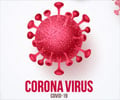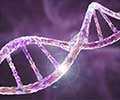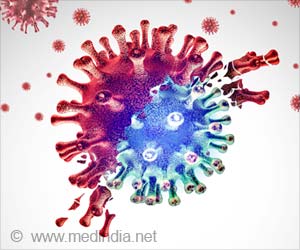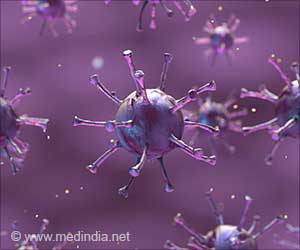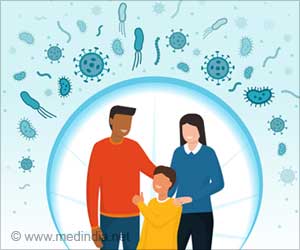Wildlife species linked to SARS-CoV-2 in Wuhan's Huanan Seafood Market, shedding light on the origins of the COVID-19 pandemic.

Genetic tracing of market wildlife and viruses at the epicenter of the COVID-19 pandemic
Go to source). The study results were published Thursday in Cell. Genetic data for the study was taken from the Chinese Center for Disease Control and Prevention (CDC). Over 800 samples were taken from the Huanan Seafood Market in Wuhan starting January 1, 2020, with viral genomes from the first COVID-19 patients.
"This may be the last big, new set of data directly from the market, and in a way, it’s like finishing the last piece of a puzzle showing a picture that has been pretty clear already," said Michael Worobey, one of three co-corresponding authors on the paper and head of the Department of Ecology and Evolutionary Biology at the University of Arizona. "We present a thorough and rigorous analysis of the data and how it fits in with the rest of the huge body of evidence we have about how the pandemic started."
‘Not every virus can cause a pandemic, but mixing them is like setting off a fire in a small space. #SARS-CoV-2 #COVID-19 #pandemic #medindia’





Advertisement
Sample Collection and Genetic Sequencing at Wuhan Market
On Jan. 1, 2020, just hours after the market closed, investigators from the Chinese went to the market to collect samples. Although they encountered little in the way of live wildlife, they swabbed the floors, walls, and other surfaces of many stalls. They came back days later to focus on surfaces in stalls where wildlife was sold, such as cages and carts used to move animals, and also collected samples from drains and sewers.They performed metatranscriptomic sequencing of the samples, a technique used to obtain RNA sequences (and which can pick up DNA as well) from all organisms present in the samples – viruses, bacteria, plants, animals, and humans. The Chinese CDC team, led by Liu Jun, published its data and results in 2023 in the journal Nature.
However, the article left unresolved the exact identities of the animal species found in the data. The Chinese CDC shared the sequencing data on public and open repositories.
Advertisement
SARS-CoV-2 Linked to Wildlife in Wuhan Market
According to the latest analysis of the data, SARS-CoV-2 was present in some of the same stalls where wildlife was sold at the market. That wildlife included raccoon dogs – small foxlike animals with markings similar to raccoons – and civet cats – small carnivorous mammals related to mongooses and hyenas. In some cases, genetic material from the SARS-CoV-2 virus and these animals were found on the same swabs."Many of the key animal species had been cleared out before the Chinese CDC teams arrived, so we can’t have direct proof that the animals were infected," said co-corresponding author Florence Débarre of the French National Centre for Scientific Research. "We are seeing the DNA and RNA ghosts of these animals in the environmental samples, and some are in stalls where SARS-CoV-2 was found, too. This is what you would expect under a scenario in which there were infected animals in the market."
Putting wild animals with viruses in contact with humans in the heart of big cities, where population densities make it easy for these viruses to take hold, is one of the most risky things humans can do, Worobey said.
"Not all of those viruses have the potential to start a pandemic, but when you do bring them in, it’s like a spark in a tinderbox," he said.
Advertisement
Evolutionary Analysis of Early COVID-19 Viral Genomes
The researchers also performed an evolutionary analysis of the earliest viral genomes reported in the pandemic. The results imply that there were very few, if any, humans infected before the market outbreak. This is consistent with spillovers from animals to humans within the market, then subsequent spread throughout Wuhan and, eventually, the whole world, Worobey said.While the data cannot prove whether one or more of these animals were infected, the analyses provide a clear list of the species that most likely could have carried the virus.
The study also presents the most complete record of animal species and specific populations within those species that could have acted as intermediate hosts at the market, Worobey said.
"It gives us clues about the populations that were represented there for each species," he said. "Where in Southeast Asia did they live? Where might they have come from? How many were farmed versus wild-caught and then moved into the transportation networks of illegal wildlife?"
Reducing the Risk of Future Wildlife-Related Pandemics
Although there has been an increased focus on lab safety since the pandemic began more than four years ago, Worobey says "surprisingly little has been done to decrease the risk of a virus jumping from wildlife into humans again.""We need to start putting the evidence of how this pandemic started into action by taking serious, concrete action to stop the perilous practice of bringing live animals with potential pandemic pathogens into densely populated urban areas," he said.
Reference:
- Genetic tracing of market wildlife and viruses at the epicenter of the COVID-19 pandemic - (https:www.cell.com/cell/fulltext/S0092-8674(24)00901-2?_returnURL=https%3A%2F%2Flinkinghub.elsevier.com%2Fretrieve%2Fpii%2FS0092867424009012%3Fshowall%3Dtrue)
Source-Eurekalert

